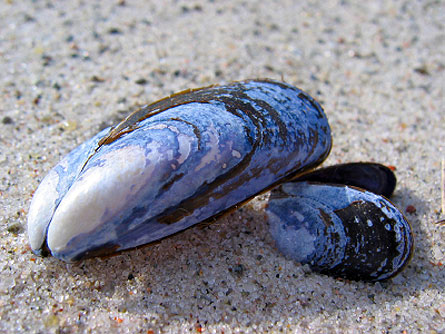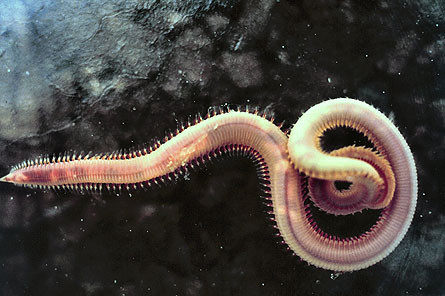Marine pollution spawns ‘wonky babies’
Pollutants at sea can slow critters' sperm or induce DNA damage
Wonky? It’s British slang for shaky, unreliable or unattractive. In Ceri Lewis’s lexicon, it refers to the odd, off-kilter embryonic development that can occur.


So when she reported, last week, finding “wonky babies” associated with pollutant-exposed sperm, it was NOT a good thing.
Many marine species broadcast their eggs and sperm, hoping they meet to beget another generation. In this environment, “sperm are often the limiting factor,” explains the University of Exeter ecotoxicologist. She and her colleagues were concerned about the fact that such sperm swim through the water essentially naked. Any pollutant can readily diffuse into these barely jacketed packets of DNA.
To probe for possible impacts of seawater pollutants on sperm, they recruited two types of worm — the lug (Arenicola marina) and green rag (Nereis virens) polychaetes — and one species of mussel, Mytilus edulis, to spawn in the lab. Then they exposed released sperm to polluted seawater. It had been contaminated with benzo(a)pyrene, a carcinogenic byproduct of fossil-fuel combustion, such as diesel burning by ships’ engines; by WAF, which is the “water-accommodated fraction” of crude oil (essentially water-soluble compounds with some polycyclic aromatic hydrocarbons); or by toxic heavy metals — cadmium and copper.
The British team selected concentrations of the pollutants to mimic what could be found in coastal seawater.
At the Society of Environmental Toxicology and Chemistry North America annual meeting in Tampa November 16 through 20, Lewis reported that sperm exposed to the dirty water exhibited significant impairments. For instance, among lug-worm sperm, those briefly exposed to water tainted with 1 or 10 percent WAF swam at only 40 to 50 percent the speed of sperm in clean water.
That may sound like excessively heavy pollutant concentrations, Lewis concedes, “but it was actually much lower than you get with accidental spills of crude oil.”
The resulting reproductive effect, Lewis explains, is essentially equivalent to “reducing the distance at which spawning will be assured” or “halving the number of sperm available” for egg fertililzation. Not a good thing.
Although benzo(a)pyrene, or BAP, didn’t affect the swimming speed of sperm in the mussel, this pollutant triggered “highly significant DNA damage” Lewis reported. For instance, 10 percent of the sperm exhibited genetic perturbations when exposed to water laced with as little as 0.01 percent of BAP.
Followup work by her group traced part of the problem to pollutant-associated impairments in DNA-repair enzymes. Those problems can occur if dads reside in dirty water. Even if given a three-day respite in clean water prior to spawning, their sperm showed significantly diminished capacity to repair DNA damage.
When sperm from BAP-exposed lug worms encountered eggs, “we saw no effect on fertilization, but the DNA damage led to abnormalities [in the resulting embryos],” Lewis found.
In the rag worm, 1- to 5-micromolar concentrations of copper sulfate rendered sperm “largely immobile” and some DNA damage occurred.
Normally, the most robust swimmers are the sperm healthiest and most likely to reach eggs. But sperm that are slow swimmers may allow a substantial share of even genetically ravaged sperm to reach and fertilize an egg. And when that happens, the risk of wonky babies skyrockets.
Precisely what makes them wonky? “We saw abnormal patterns of cleavage” in dividing cells, Lewis says. During embryonic development, cells should divide in half, again and again. But sometimes the division isn’t really symmetrical, rendering portions of the developing tissues bigger or smaller than normal. If the resulting animal survives to hatch, “it will be highly wonky — highly assymetical,” Lewis says. “And the more skewed the cleavage, the less likely that [a developing animal] will make it to a swimming larval stage.”
The real curiosity, she finds, is that many animals continue to reproduce in very polluted environments. “It’s intriguing and we’d like to find out how they manage it.”






